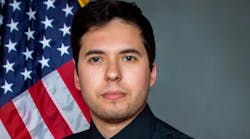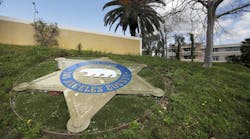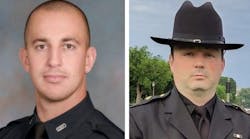Editor's Note: To schedule a specialized training session for your unit or to speak with the TSC’s outreach office, contact Terry Wyllie at 571-350-4106.
A simple phone call is all that’s required for officers to verify whether an individual may be a known or suspected terrorist. That phone call connects the officer to a massive technology network and system superior to any other like it in the world: the Terrorist Watchlist. It may also help save lives by arming officers with intelligence and the information that they may be dealing with one of the most dangerous individuals on the planet.
In 2011, thousands of known or suspected terrorists were stopped in each of the 50 states by law enforcement officials for all sorts of reasons unrelated to terrorism. As of September 2011, the FBI Terrorist Watchlist contained approximately 420,000 individuals.
However, if LEOs don’t know about or don’t contact the Terrorist Screening Center (TSC), a terrorist could slip through a routine stop and go on to commit a horrendous attack, which isexactly what happened before 9/11. In fact, three of the 9/11 hijackers—Mohammed Atta, Ziad Jarrah and Hani Hanjour—were stopped by law enforcement for routine traffic violations in the days leading up to the attack.
In those days, however, there was no central system to identify them as having an association with terrorism. Thankfully, that has all changed. Today, state and local law enforcement have a willing partner to help improve officer safety, strengthen national security and expand U.S. counterterrorism efforts—the TSC.
Timothy J. Healy, director of the TSC and a career FBI agent, explains that it is critical for law enforcement officials to work closely with the TSC. “If the TSC was operational prior to 9/11 and the process worked as it does today, it could have made that horrible day entirely different,” Healy says. “Since the first day we stood up the TSC operations center, we have always pushed to create a seamless relationship between federal, state, local and tribal law enforcement.
“One call can make an enormous difference. The officer gets important information, the intelligence community gets important information, and our communities and our country are safer. So a big part of what we do is to work with law enforcement officials across the country to develop standards of procedure so that this important conversation takes place. Hundreds of thousands of lives are on the line.”
Transactional interface
Although there have been numerous improvements to the process, one of the most significant is the sheer speed of information flow from the TSC to law enforcement and other government screeners. What used to take days now takes place in a matter of minutes. Today, when an individual is placed on the Terrorist Watchlist, that information is made available almost instantly to all downstream users.
This is called transactional interface. When the FBI eventually identified the man who attempted to bomb Times Square in 2010, Faisal Shahzad, and he was placed on the no-fly list (a subset of the Terrorist Watchlist), that information was available within minutes to all government screeners. Customs and Border Protection officials had that information instantaneously, identified the bomber, notified the TSC and there was an operational response to arrest him. This showcased the system’s agility and transactional interface, where the information was available and the system worked the way it was designed.
One phone call to a specialist at TSC’s 24/7 operations center is all it takes to verify whether there is a positive match. It is a process that takes as little as 5 to 10 minutes for an average stop.
Once connected, a TSC operations specialist works through a series of standard questions with officers so that they can elicit enough information to make an identity determination. TSC Outreach Coordinator Terence Wyllie provides an example he uses when he briefs local law enforcement. “Let’s say a known terrorist lost two fingers in a previous bombing,” Wyllie says. “A TSC operations specialist might tell a dispatcher to have the officer analyze a suspect’s right hand. If the officer reports that two fingers are missing, we know that’s the guy.”
Once a positive match is made, the information flow begins, all to the benefit of enhanced national and homeland security. Although 10 states lead the country in the times an officer encounters a known or suspected terrorist, encounters occur in every state in the nation. This is why it is critical for law enforcement officials everywhere to contact the TSC when an NCIC check turns up a potential hit. Still, many officers are not working with the TSC to the degree necessary to provide the full value of the Terrorist Watchlist to protect officers, communities and homeland.
Given all that is at stake and the simplistic process, why wouldn’t an officer contact the TSC if an NCIC check brought up the TSC banner? The main reason: Many are still unfamiliar with the TSC banner and the procedure.
This is why the TSC runs an active outreach program, where officials offer training and briefings to those who need it. The TSC also works individually with departments from Arlington, Va., to San Diego, Calif.
Though the basic program is relatively constant, the TSC tailors each training session to each unit and the particular terrorist threat characteristics of certain areas. The TSC has conducted hundreds of briefings for thousands of officials nationwide since its creation, and has briefed at the International Association of Chiefs of Police Annual Conference and the National Sheriffs’ Association Annual Conference.
Wyllie wants every law enforcement official to know that the training is available. “Our program raises awareness and encourages the use of this important system. We want all officers and chiefs integrating TSC into their daily practices,” He urges departments to consider enacting new standards of procedure that make contacting the TSC when the banner is displayed to be a compliance issue, and many departments have responded enthusiastically.
The TSC & the Terrorist Watchlist
Before 9/11, various government agencies maintained nearly a dozen separate watchlists including the FBI’s National Crime Information Center/Known or Suspected Terrorist file (NCIC/KST), the Integrated Automated Fingerprint Identification System (IAFIS), the U.S. Marshals Service Warrant Information, the Department of State’s Terrorism Watch List called “TIPOFF” and several others designed to screen persons of interest to U.S. law enforcement and counterintelligence officials.
While some lists were shared, there was little integration and cooperation, and there was no central clearinghouse where all law enforcement and government screeners could access the best information about a person of interest.
“We had a lot of strong threads, but they weren’t sewn together to form a powerful net. That has all changed now,” Healy says.
The TSC began operations on Dec. 1, 2003, and is the U.S. government’s consolidation point for known and suspected terrorist watchlist information, both foreign and domestic. The Terrorist Watchlist (a.k.a. the Terrorist Screening Database or TSDB), contains thousands of records that are updated daily and shared with federal, state, local, territorial, tribal law enforcement, and intelligence community members, as well as international partners to ensure that individuals with links to terrorism are screened.
FBI Director Robert S. Mueller describes it simply: “Think of this as the who’s who of terrorists.”
But building and keeping the watchlist accurate, current and thorough is only half of TSC’s strategic mission in homeland security and counterterrorism efforts. The other half is implementation, information-sharing, and pushing the list to people who need it.
“Without the participation of the entire law enforcement, homeland security and counterterrorism communities, the Terrorist Watchlist is just a hollow bunch of names,” Healy adds. “A core part of our mission is to push this information out to law enforcement so they know we are here to help, but more importantly, so they realize the critical role they play in the effort to keep up with today’s modern terrorist threat.”


